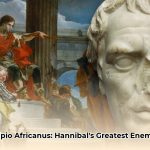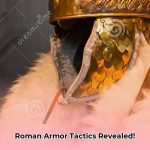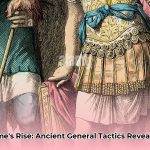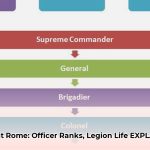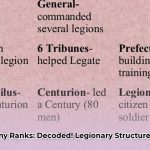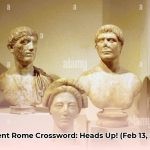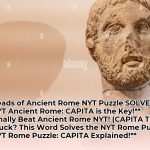Ever wondered how a small city-state on the Tiber River grew into the colossal power that shaped the Western world for centuries? It wasn’t just Rome’s legendary legions, but the astonishing strategic brilliance and political acumen of its generals. These weren’t mere battlefield commanders; they were innovators, nation-builders, and shapers of destiny. From the adaptable genius of Scipio Africanus, who dared to learn from his enemies, to the revolutionary military reforms of Gaius Marius, and the unbounded ambition of Julius Caesar who irrevocably altered the course of the Republic, these figures left an indelible mark. Consider also figures like Spartacus, who, as detailed in this article about slave rebellion, challenged Roman authority. Beyond the iconic triumvirs, men like Pompey the Great, the empire’s steadfast architect Agrippa, and the expansive Emperor Trajan, each played a pivotal role in Rome’s military and territorial zenith. This exploration delves into the tactical innovations, the political tightropes walked, and the lasting legacies of these ancient Roman generals. Prepare to uncover the sophisticated interplay between military might, political maneuvering, and fundamental societal change that allowed Rome to rise, flourish, and endure.
The Architects of Empire: Unpacking Roman Generalship
Rome’s military success was not accidental, nor was it uniform. It was the result of a diverse lineage of commanders who consistently demonstrated adaptability, logistical foresight, and a keen understanding of both military and political landscapes. These generals operated within a system that, while ostensibly republican for centuries, increasingly relied on their individual charisma and proven battlefield prowess. Their capacity to learn from both victories and defeats, to innovate under pressure, and to transform the very nature of Roman warfare was paramount.
A critical factor was their willingness to embrace diverse strategies. Some excelled at direct confrontation, others at wearing down an enemy through attrition or diplomacy. The ability to manage vast supply lines, integrate new technologies, and maintain morale across expansive campaigns separated the merely competent from the truly legendary. This multifaceted approach to leadership, combining martial skill with administrative and political savvy, became a defining characteristic of Rome’s most successful military figures.
Scipio Africanus: The Strategist Who Dared to Learn
Publius Cornelius Scipio, famously known as Scipio Africanus, emerged as a beacon of strategic innovation during Rome’s darkest hour, the Second Punic War against Hannibal Barca. Born into a prominent patrician family in 236 BC, Scipio witnessed firsthand Rome’s devastating defeats at the hands of the Carthaginian genius. Yet, unlike his predecessors who rigidly clung to conventional tactics, Scipio possessed a rare intellectual curiosity: he studied Hannibal’s methods, dissecting his feints, maneuvers, and psychological warfare. This profound willingness to learn from his adversary, rather than merely react, distinguished him.
At the young age of 25, Scipio was granted command in Hispania, a region where Roman efforts had previously faltered. He revitalized the Roman presence by employing mobile, aggressive tactics, capturing vital Carthaginian strongholds like Cartagena. His true strategic masterpiece, however, came with his audacious proposal to take the fight directly to Carthage, invading North Africa. This bold move forced Hannibal to recall his forces from Italy to defend his homeland.
The climax arrived at the Battle of Zama in 202 BC. Here, Scipio demonstrated extraordinary tactical brilliance, countering Hannibal’s fearsome war elephants by ordering his legions to open their ranks, creating corridors for the beasts to charge through harmlessly. His innovative use of cavalry, including the Numidian horsemen who had previously aided Hannibal, played a decisive role in outflanking and ultimately crushing the Carthaginian army. This decisive victory not only ended the Second Punic War but cemented Scipio’s reputation as one of history’s greatest commanders, illustrating the power of strategic emulation and adaptation.
Gaius Marius: Revolutionizing the Roman Army
Gaius Marius, born in 157 BC, stands as a transformative figure in Roman military history, whose reforms irrevocably altered the structure and political landscape of the Republic. Before Marius, the Roman army was primarily composed of land-owning citizen-soldiers, a levy rather than a professional force. This system was increasingly inadequate for protracted wars and defending Rome’s burgeoning borders, leading to severe manpower shortages and battlefield inefficiencies.
Marius’s radical response was to open the army’s ranks to the capite censi, landless citizens who had previously been excluded from military service due to their lack of property. This revolutionary change dramatically expanded the pool of recruits, effectively solving Rome’s immediate military crises. Furthermore, Marius streamlined the army’s logistics and equipment. Soldiers were now uniformly equipped by the state, and they underwent rigorous, standardized training, transforming them into a professional fighting force. Each legionary was also required to carry a significant portion of his own supplies and equipment, earning Marius’s troops the enduring nickname “Marius’ Mules,” a testament to their unparalleled endurance and self-sufficiency.
These reforms, while militarily brilliant, had profound and often unforeseen political consequences. Soldiers, now serving for extended terms and financially reliant on their generals for pay, equipment, and crucially, land grants upon retirement, developed a fierce personal loyalty to their commanders rather than to the distant Roman Senate or the abstract concept of the state. This shift in allegiance fundamentally undermined the traditional republican power structures. Ambitious generals, often political rivals, could now leverage their intensely loyal armies for personal political gain, plunging Rome into a series of devastating civil wars that ultimately destabilized the Republic and paved the way for the rise of figures like Sulla, Pompey, and ultimately, Julius Caesar. Marius’s legacy is thus a complex paradox: he forged the formidable military machine that enabled Rome’s unparalleled dominance, yet inadvertently sowed the very seeds of the Republic’s demise.
Julius Caesar: The Indomitable Warrior-Politician Who Reshaped Rome
Gaius Julius Caesar, born into a patrician family in 100 BC, is arguably the most iconic figure of ancient Rome, seamlessly blending unparalleled military genius with ruthless political ambition. His military career began in Asia and Cilicia, where he served with distinction, learning the practicalities of command far from Rome’s political intrigues.
Caesar’s most celebrated military campaign was his methodical conquest of Gaul (58-50 BC). Over eight years, he led his legions to victory against numerous Gallic tribes, expanding Roman territory to the English Channel and the Rhine. His ability to adapt to diverse terrains, secure rapid advancements, and inspire unwavering loyalty in his troops became legendary. He was famously the first Roman general to cross both the Rhine (building a bridge) and invade Britain, showcasing an audacious willingness to push strategic boundaries.
Yet, Caesar was far more than a general; he was a master politician. His alliance with Pompey and Crassus in the First Triumvirate allowed him to rise to unprecedented power. However, as his military successes in Gaul swelled his influence, the Roman Senate and his former ally Pompey grew increasingly wary. Caesar’s defiance of the Senate’s order to disband his army culminated in his legendary crossing of the Rubicon in 49 BC, an irreversible act that triggered a civil war.
Caesar’s subsequent triumph over Pompey and the senatorial forces solidified his position as the dominant figure in Rome. As dictator, he enacted significant reforms, restructuring the calendar and embarking on ambitious public works projects. His increasing concentration of power and perceived threat to the Republic, however, ultimately led to his assassination by a group of senators on the Ides of March in 44 BC. Caesar’s career remains a powerful testament to the impact of individual will on history, marking the definitive transition from the Roman Republic to the centralized authority of the Roman Empire.
Beyond the Titans: Other Pivotal Roman Generals
While figures like Scipio, Marius, and Caesar often dominate historical narratives, many other Roman generals were instrumental in the Republic’s and Empire’s expansion, consolidation, and enduring stability. Their diverse contributions underscore the breadth of military and administrative talent that propelled Rome to greatness.
Gnaeus Pompeius Magnus: The Great Rival
Gnaeus Pompeius Magnus, or Pompey the Great (106–48 BC), was a formidable military and political figure of the late Roman Republic. Rising to prominence by aiding Sulla, Pompey swiftly earned his “Magnus” epithet through a series of decisive victories. His unparalleled success in clearing the Mediterranean of pirates in just three months (67 BC) demonstrated his strategic genius and organizational prowess, securing vital trade routes, particularly for Rome’s grain supply.
Pompey’s extensive Eastern campaigns (66-62 BC) saw him crush Mithridates VI of Pontus and fundamentally reshape the geopolitical map of the Near East, adding vast new territories and client kingdoms to Rome’s sphere of influence. His later alliance with Caesar and Crassus in the First Triumvirate temporarily stabilized Roman politics but ultimately dissolved into a bitter rivalry with Caesar, culminating in civil war. Despite commanding a numerically superior force, Pompey was decisively defeated at the Battle of Pharsalus (48 BC) and tragically assassinated in Egypt, his fall marking a critical turning point in Rome’s transition from Republic to Empire.
Marcus Vipsanius Agrippa: The Empire’s Silent Architect
Marcus Vipsanius Agrippa (63–12 BC), a close friend and military commander to Octavian (later Emperor Augustus), was arguably the indispensable architect behind the establishment of the Roman Empire. Though less celebrated than his political partner, Agrippa’s military and civic achievements were monumental. He masterminded the naval victories against Sextus Pompey at Mylae and Naulochus (36 BC), which secured Octavian’s control of Italy and the grain supply. His most famous naval triumph, however, was at the Battle of Actium (31 BC), where his strategic genius decisively defeated the combined forces of Mark Antony and Cleopatra, paving the way for Octavian’s sole rule.
Beyond the battlefield, Agrippa was a visionary administrator and engineer. He oversaw the construction of crucial infrastructure, including roads, aqueducts (like the Aqua Virgo), and the Pantheon’s original design in Rome. His dedication to civic improvements ensured that the sprawling empire could function efficiently, bringing fresh water to the city and facilitating communication and trade across vast distances. Agrippa’s quiet but profound contributions to both military dominance and civil stability were foundational to the Pax Romana.
Nero Claudius Drusus: The Young Conqueror of Germania
Nero Claudius Drusus (38–9 BC), stepson of Augustus and brother of the future Emperor Tiberius, was a brilliant young general whose promising career was tragically cut short. Drusus displayed remarkable military aptitude early on, serving alongside Tiberius against Alpine tribes. His most significant contributions came in Germania, where he led a series of aggressive campaigns east of the Rhine (12-9 BC).
Drusus was the first Roman commander to lead sustained campaigns as far as the Weser and Elbe rivers, establishing a network of forts and subjugating tribes like the Sicambri, Batavi, Frisii, Chatti, Marcomanni, and Cherusci. His strategic objective was to push the Roman frontier deep into Germania, securing new territories and resources. While highly successful in his campaigns, Drusus died at the age of 29 after falling from his horse, robbing Rome of a general who might have significantly altered the course of its relationship with Germanic tribes.
Gnaeus Julius Agricola: Pacifying Britannia
Gnaeus Julius Agricola (40–93 AD) was a Roman general and governor whose campaigns brought much of Britain under Roman rule. After serving in various capacities in Rome, Agricola was dispatched to Britain by Emperor Vespasian. As governor from 77 to 84 AD, he systematically consolidated Roman control over the province, pushing military operations as far north as Scotland. He famously defeated the Caledonian tribes at the Battle of Mons Graupius (83 AD).
Agricola wasn’t just a conqueror; he was an able administrator. He established a network of forts and roads across the island and implemented policies aimed at Romanizing the native population, encouraging the adoption of Roman customs and education among the local nobility. He also famously ordered the Roman fleet to circumnavigate Britain, confirming its island status. Agricola’s efforts laid the foundation for long-term Roman presence in Britain, showcasing a blend of military might and cultural assimilation.
Marcus Ulpius Traianus: Rome’s Zenith of Expansion
Marcus Ulpius Traianus, or Trajan (53–117 AD), stands as one of Rome’s “Five Good Emperors” and a military titan who oversaw the greatest territorial expansion in the Empire’s history. Born in Baetica (modern Spain), Trajan’s military background was extensive before he ascended to the throne in 98 AD.
His reign was marked by aggressive and highly successful military campaigns. The Dacian Wars (101-102, 105-106 AD), commemorating his victories with Trajan’s Column in Rome, saw the rich kingdom of Dacia conquered and annexed, providing immense wealth to the empire. Later, his Parthian campaigns (113-117 AD) pushed Roman control into Mesopotamia, reaching the Persian Gulf. Trajan’s military genius lay in his meticulous planning, effective siege warfare, and ability to lead his forces deep into enemy territory. His expansionist policies, combined with his just and benevolent rule, represent a peak of Roman power and influence.
The Enduring Legacy: How Roman Generals Forged an Empire
The collective impact of these ancient Roman generals extends far beyond the immediate outcomes of their battles. They were instrumental in shaping the geopolitical boundaries of the Roman world, transforming its internal political dynamics, and fundamentally reforming its military apparatus. Their actions left an indelible mark on Western civilization, inspiring and influencing military strategists and leaders for millennia.
Strategically, they demonstrated the power of adaptability, learning from their enemies and constantly innovating tactics. Logistically, they built efficient supply chains and organizational structures that allowed Rome to sustain armies across vast distances. Politically, they navigated a treacherous landscape, often leveraging their military successes to gain immense power, inadvertently transitioning Rome from a republic where power was supposed to reside with the Senate and people, to an empire where it was concentrated in the hands of a sole ruler. This fundamental shift in civilian-military relations, particularly after Marius’s reforms, remains a critical lesson in the unintended consequences of even the most necessary changes.
The success of these generals was not simply about winning battles; it was about building and maintaining a sophisticated military machine that was intrinsically linked to the state’s political and economic structures. Their stories serve as enduring case studies in leadership, strategic thinking, and the complex interplay between individual ambition and the grand sweep of history. The Roman Empire, in all its glory and eventual decline, was undeniably forged by the swords and minds of these extraordinary generals.

